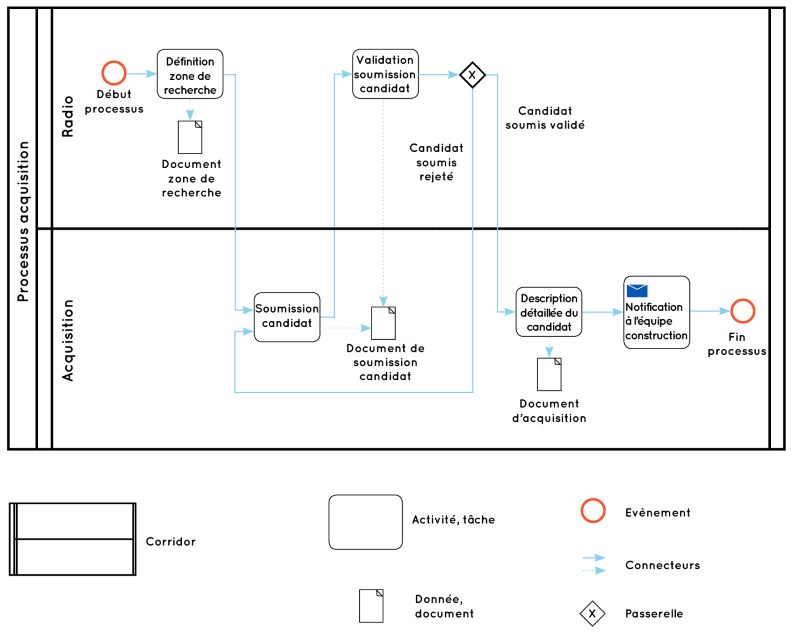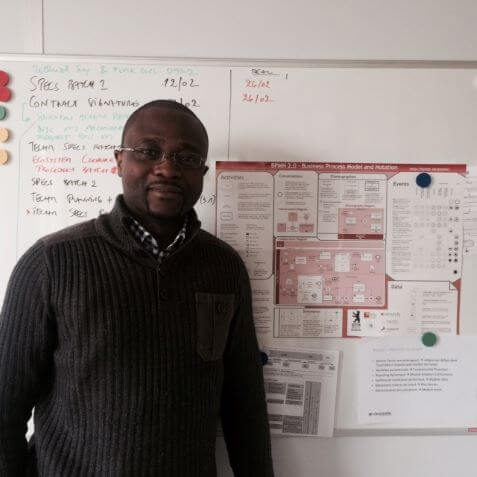Task management, process management, BPM, BPMN. It’s bewildering!
Every technician and every engineer who works for a telecommunications operator has to manage projects. Irrespective of the size of these projects, they involve actions, people, decisions, sometimes stepping backwards, and approvals. The longer and the more tedious the project, the more people and actions it involves, and the more difficult it becomes to keep track of it.
In our field of activity, the management of radio or transmission sites is the most eloquent example. Many operators, who manage thousands, or even tens of thousands of telecommunications sites, work with unsuitable tools, and sometimes no more than an Excel file. Consequently, a lot of information is lost in an inefficient system that can cost the company a lot of money.
“Business Process Management is an approach that allows us to imagine and model project processes by identifying the stakeholders, the necessary actions, the interactions and the critical points. Not only does this approach enable everyone involved to know what to do and when, but it also allows the progress of the project to be tracked permanently. By deploying BPM in our organisation, we have greatly improved the performance of our processes, because the potential for optimisation increases significantly. It is a key factor that allows us to achieve our objectives,” explains Romaric.
For a long time, every company or organisation modelled its processes in its own way, using its own codes. But then, the BPMI (Business Process Management Initiative) came up with a standard notation system, the BPMN.
BPMN is a shared, standard and international graphical representation of business processes.
The Business Process Modelling Notation is an international representation system that defines a common and standard graphical notation to model business processes. Romaric has been won over: “The first benefit is that all the preliminary work to graphically represent the process (representation of the organisation, tasks, flows and documents) has already been done! Every item already has a graphical representation and a logic. And what’s more, it’s a language that can easily be understood by anyone and anywhere. All we have to do is fit the pieces of the puzzle together in our own way!”
BPMN aims to overcome the gap in communications that often exists between the design of business processes and their implementation. Actions in the BPMN process are represented by four main objects: activities, events, connectors and gateways. The example below shows a simplified process for the acquisition of network sites.

Activities, or tasks, are represented by the rectangles with rounded corners. The circles represent events that mark the start and end of the process. Gates, represented by diamonds, show the different possible paths of the process, depending on the possibilities available. Finally, the connectors, represented by arrows, connect the activities to one another.
In the example above, the radio team kicks off the process with a nominal plan. Then the acquisition team proposes candidates, which are approved by the radio team. If the candidate is approved, the acquisition team will organize a technical visit and propose a lease. The process is complete.
But BPMN would not be of much use if it was just a graphical representation of a process. The modelled process is then integrated in ClickOnSite.
“Once the processes have been modelled with the customer’s agreement, I simply have to interface the modeller’s and ClickOnSite’s APIs. The workflows are created automatically and are operational in ClickOnSite. Every object in BPMN represents an action, defines tasks and sends alerts to people.
It makes our customers perfectly flexible and puts them in control of their tools. If their processes change, the changes can be made almost instantaneously, without calling in the developers. Everything is fast, simple and secure.
Thanks to ClickOnSite, our customers save a lot of time in administrative and routine tasks. They can then concentrate on more important missions. The teams involved in the project clearly become more efficient, but more importantly, they really enjoy doing their everyday work! ClickOnSite, with its BPMN tool, will revolutionise your everyday activity and the performance of your department!”, concludes Romaric.
We have decided to demonstrate the numerous benefits of ClickOnSite, because it is always easy to talk and assert. Contact us for a free demonstration.
